Contents
- Bankot Fort
- Ganpatipule Mandir
- Gopalgad Fort
- Govindgad Fort
- Hedvi Dashabhuj Ganesh Mandir
- Hunter Memorial Church
- Karneshwar Mandir
- Lokmanya Tilak Memorial Library
- Milagris Church
- Murlidhar Mandir
- Naravan Village
- Panhalakaji Caves
- Parshuram Mandir
- Patit Pavan Mandir
- Ratnadurg Fort
- Sane Guruji Smruti Bhavan
- Shahi Masjid
- Shiv Mandirs at Kasba
- Shri Vitthal Vishnu Mandir
- Someshwar Shiv Mandir
- Thibaw Palace
- Uddaleshwar/Talkeshwar Mandir
- Ukshi
- Valukeshwar Mandir
- Velneshwar Mandir
- World War I Memorial
- Yakub Baba Dargah
- Zari Vinayak Mandir
- Sources
RATNAGIRI
Cultural Sites
Last updated on 22 July 2025. Help us improve the information on this page by clicking on suggest edits or writing to us.
Bankot Fort
Bankot Fort is a coastal fortification located in Bankot village, Ratnagiri. Over time, it has been known by several names, including Himmatgad under the Marathas, and Fort Victoria under the British, each marking a distinct phase of political control.
Sachin Joshi, in Ratnāgiri Jillhyachi Durgajijnyasa (2012), notes that the fort’s origins are believed to date back to the Shilahara dynasty. However, the first concrete historical reference to the fort is said to have emerged in 1548, when the Portuguese are said to have seized control and subsequently set fire to both the fort and the surrounding village.
![Aerial view of Bankot Fort and its surrounding landscape in Bankot village, Ratnagiri.[1]](/media/culture/images/maharashtra/ratnagiri/cultural-sites/aerial-view-of-bankot-fort-and-its-s_gIdz3hR.png)
In 1733, the fort was taken by the Marathas, likely from the Siddis. The British later seized it in 1755 and renamed it Fort Victoria. It was later returned to Maratha control, and the name Himmatgad was reinstated. These changes reflect the broader struggle for control along the Konkan coast during this period.
Architecturally, the fort was designed primarily for defense and is enclosed by a wide trench and laterite walls nearly three ft. thick. The main gate, though weathered, remains standing, with traces of a carved Ganesh still visible in the stone. Within the compound are the remains of British-era bungalows, as well as a well on the western side. A concealed passage, the Chor Darwaja, leads directly to the sea, likely used for discrete movement or escape. Structures from the British period remain within the fort, including the foundations of bungalows and a memorial to the wife and daughter of an Officer named Arthur Malt, who drowned in a storm at Bankot Khadi.
Ganpatipule Mandir
Shree Ganpatipule Mandir is located at the base of a forested hill along the western coastline of Ratnagiri district. The Mandir is dedicated to Bhagwaan Ganesh and is a prominent tirtha yatra site in the region. The murti enshrined in the Mandir is considered swayambhu and is believed to be nearly 400 years old.
![Shree Ganpatipule Mandir in Ratnagiri, located at the base of a forested hill near the coast, is dedicated to Bhagwaan Ganesh.[2]](/media/culture/images/maharashtra/ratnagiri/cultural-sites/shree-ganpatipule-mandir-in-ratnagir_H84deNI.png)
According to local tradition, the origins of the Mandir are associated with Balbhatji Bhide, a Brahmin and the village renter of the area. Facing a period of personal difficulty, Bhide is said to have taken a vow to fast and seek resolution through prayer. He began offering daily worship to Ganesh, his ishtadevata (chosen deity), in the nearby forested area.
During this time, Bhide is believed to have had a vision in which Ganesh revealed his presence at the site. Soon after, the murti of Ganesh was discovered at the foot of the hill, at the very location indicated in the vision. A devasthan was built at the spot, and worship was formally established. Notably, years later, the present-day structure of the Mandir was built by Annaji Datto, a minister in the court of Chhatrapati Shivaji Maharaj.
Gopalgad Fort
Gopalgad Fort, also known as Anjaval Fort, is a coastal fortification located near Anjanvel village in Ratnagiri district, at the junction of the Vashishti River, Dabhol Creek, and the Arabian Sea. The fort holds strategic significance due to its position overlooking key maritime routes along the Konkan coast.
![Aerial view of Gopalgad Fort and its surrounding coastline near Anjanvel, Ratnagiri.[3]](/media/culture/images/maharashtra/ratnagiri/cultural-sites/aerial-view-of-gopalgad-fort-and-its_fuzl0ye.png)
Parag Pimpale, in Sada Sagarchi: Guhagara-Velanesvara-Hedavi (2004), notes that the fort was originally built under the Adil Shahi dynasty of Bijapur (1490–1686). It was captured by Shivaji in 1660 during his coastal campaigns and later repaired by Sambhaji Maharaj. The Siddis briefly controlled the fort before it was taken by the Angres, a naval clan under Maratha rule, in 1755. The following year, in 1756, the fort passed to the Peshwas, who held power until the British conquest of the region in 1818.
The fort has two gates, one facing east and the other west. The eastern gate bears an inscription in Farsi, dated to 1707. The southern side of the fort includes a trench dug for defensive purposes. The fortifications are built primarily in laterite stone, consistent with regional military architecture.
The interior contains the remains of a wada-style structure and open spaces that may have once housed garrisons or administrative quarters. The layout suggests both residential and military use during its various phases of occupation.
But the most surprising part of Gopalgad’s story happened in the 1960s. Due to a government mistake, the fort’s land was marked as “barren” and sold for just ₹300 to a man named Yunus Hussain Maniyar, who turned it into Simran Mango Farm. For many years, the fort was private property, and locals were upset. People from the village and heritage groups, including Vaidya, Mangesh Pawar, and Akshay Pawar from the Giri Mitra Foundation, fought for years to get it back. In 2009, their efforts paid off, and the fort returned to the government.
Govindgad Fort
Govindgad Fort, also known as Govalkot Fort, is located on an island in the Vashishti River, near Chiplun. The fort is believed to have been built by the Siddis of Janjira, though some accounts suggest it may have been originally constructed by Chhatrapati Shivaji Maharaj and later taken over.
The site includes a freshwater lake, the remains of several wadas, and a Mandir dedicated to Devi Vinjai. At one time, the fort had 21 cannons, of which only two remain. Traces of a western gate suggest a former dockyard connection. Cannons on the western side point toward the river, underlining the fort’s former defensive role.
In 1734, the fort was captured by the Angres (commanders of the Maratha naval fleet, led by Kanhoji Angre and his successors). Much of the structure is now in ruins, but key elements of its layout and use remain visible in the landscape.
Hedvi Dashabhuj Ganesh Mandir
Hedvi Dashabhuj Ganesh Mandir is located in the coastal village of Hedvi in Ratnagiri district. The Mandir is dedicated to a ten-armed form of Ganesh, locally known as Dashabhuj Ganpati, and is one of the most well-known places of worship in the region. It continues to attract yatris from across Maharashtra, particularly during Ganesh Chaturthi.
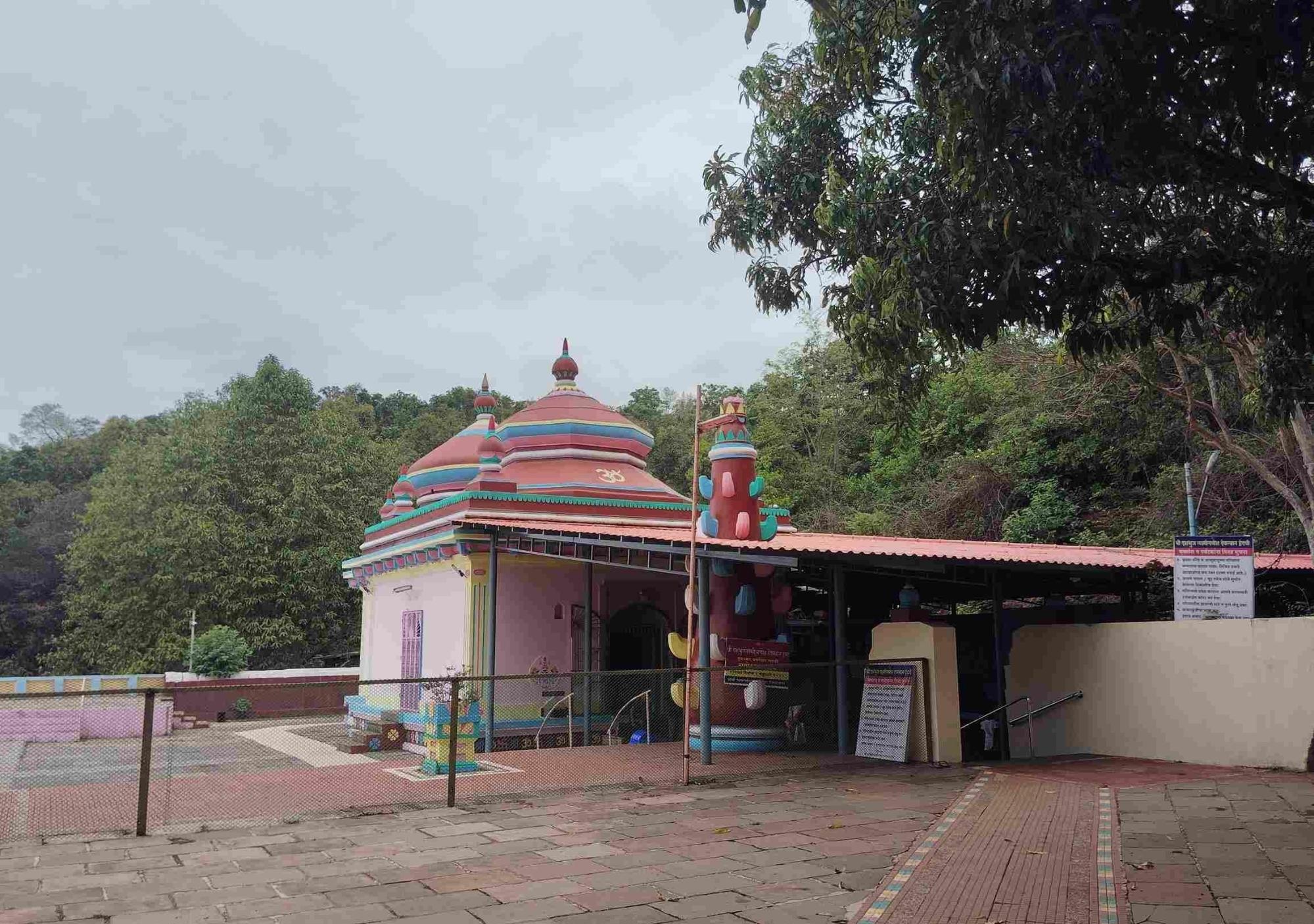
Parag Pimpale, in his book Sada Sagarchi (2004), mentions that the Mandir was constructed in the 18th century during the rule of the Peshwas. The initiative came from a local Ganesh bhakt named Kelkar Swami, whose spiritual discipline, devotion, and following in the area drew attention. Notably, it is said that Peshwa Madhavrao I (who served as 9th Peshwa of the Maratha Empire) is said to have been moved by Kelkar Swami’s devotion and granted one lakh rupees for the construction of the mandir.
The Dashabhuja murti is believed to have been brought from Kashmir, and remains the central focus of the garbhagriha (sanctum). On either side of the sanctum are carved images of Jay and Vijay, the traditional dwarpals. The outer walls of the Mandir feature sculpted peacocks in display, typical of decorative work from the period.
Kelkar Swami’s padukas are preserved inside the Mandir and are an object of reverence for all those who visit. His role in the founding of the site is still remembered through oral tradition and local ritual.

Hunter Memorial Church
Hunter Memorial Church is located beside the Ratnagiri Police Station and was established on March 14, 1878. It stands as one of the earliest Protestant churches in the district.
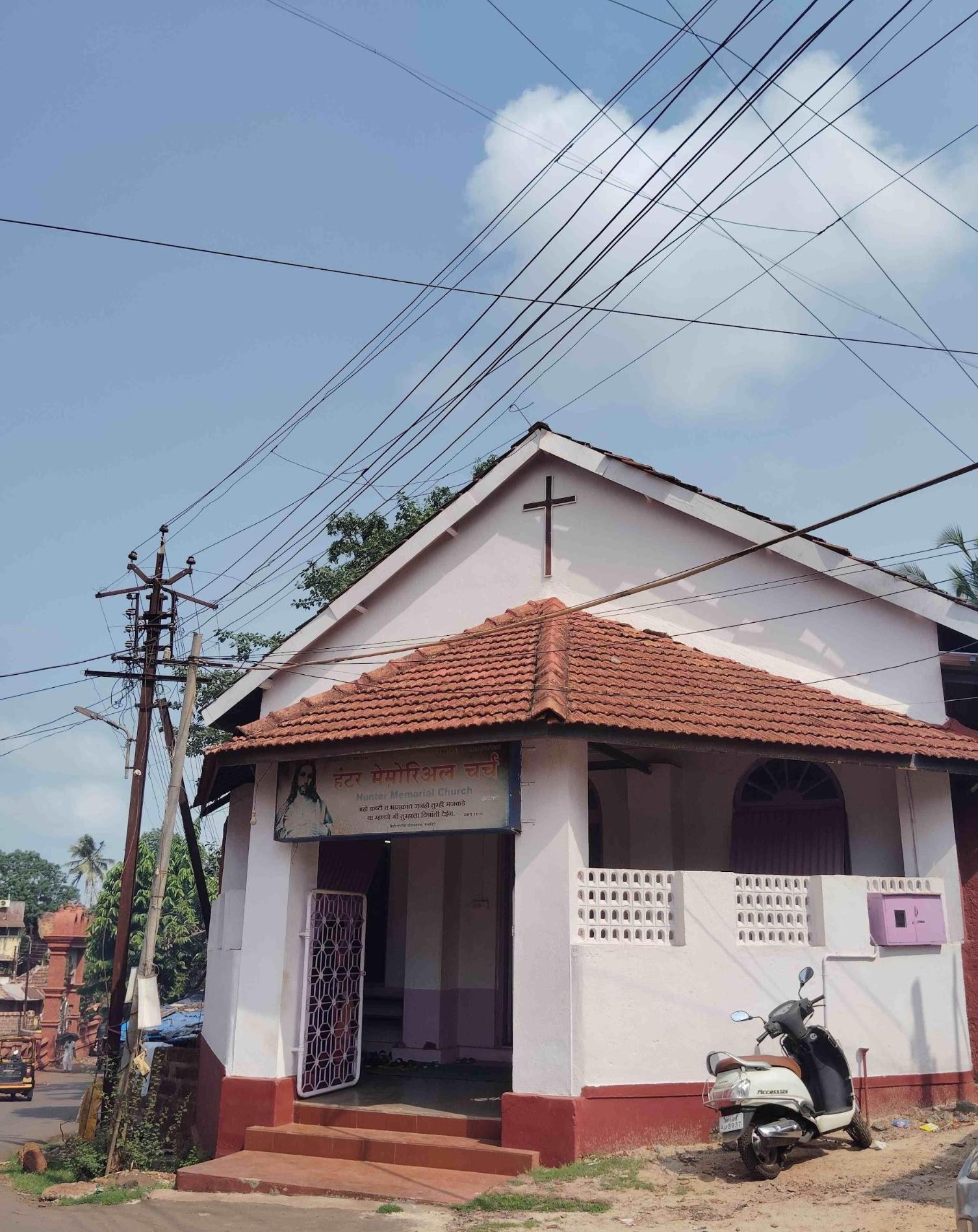
The church traces its roots to early missionary activity in the region. After British rule was established in 1822, the Scottish Missionary Society set up schools in villages like Bankot and Harnai. These efforts were revived in 1873 by the American Presbyterian Board, who are also noted to have helped build this church.
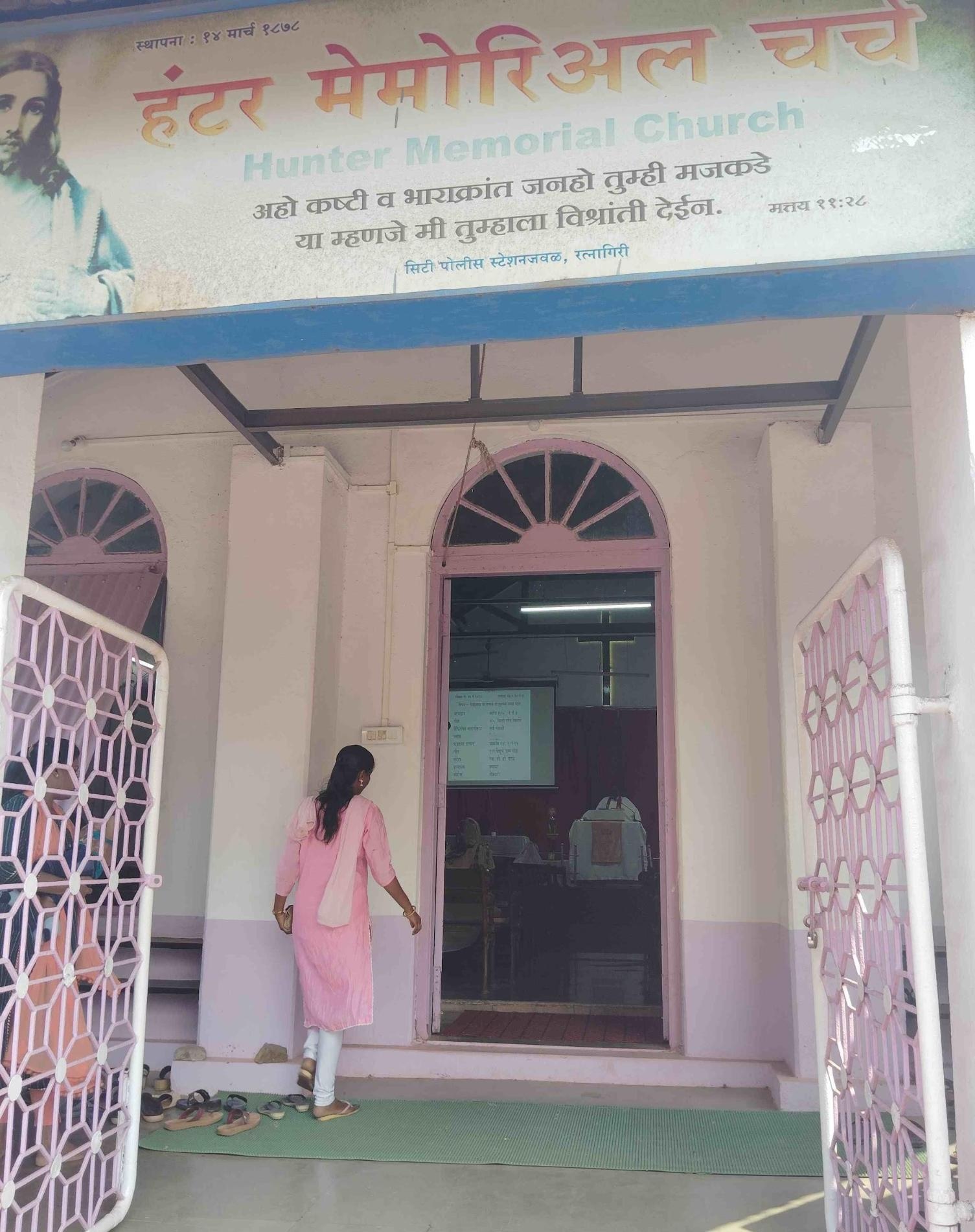
Karneshwar Mandir
Karneshwar Mandir is located near the confluence of Shashtri and Sonavani rivers in Kasba, Ratnagiri district, and is dedicated to Bhagwaan Shiv. Built from stone, it is considered to be among the oldest surviving mandirs in the region and is a state-protected monument. Its construction is generally attributed to King Karn of the Chalukya dynasty, who ruled parts of the Deccan in the 11th century CE. A local legend, however, places the origin of the Mandir even earlier. It is said that during their exile, the Pandavas stayed at this location and built this Mandir in a single night.
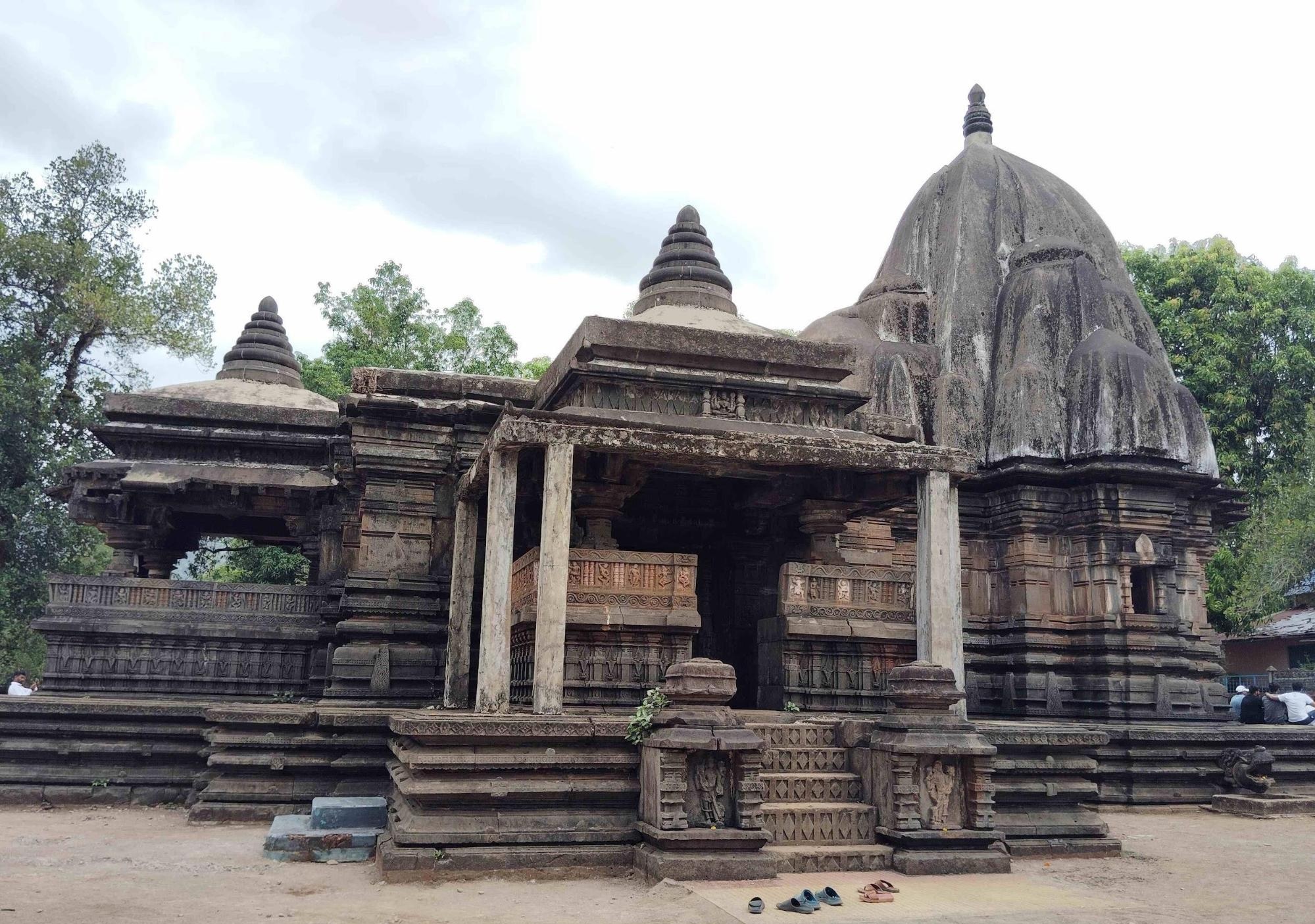
The structure features several distinct carvings and iconographic details. A prominent panel above the entrance to the sabhamandap (assembly hall) shows Vishnu in a reclining posture, positioned below a row of the Dashavatars (ten avatars). Interestingly, Balram appears as the eighth avatar instead of Krishna (a variation that is not commonly found). The carved pillars are supported by horizontal Yaksha (nature spirit) figures.
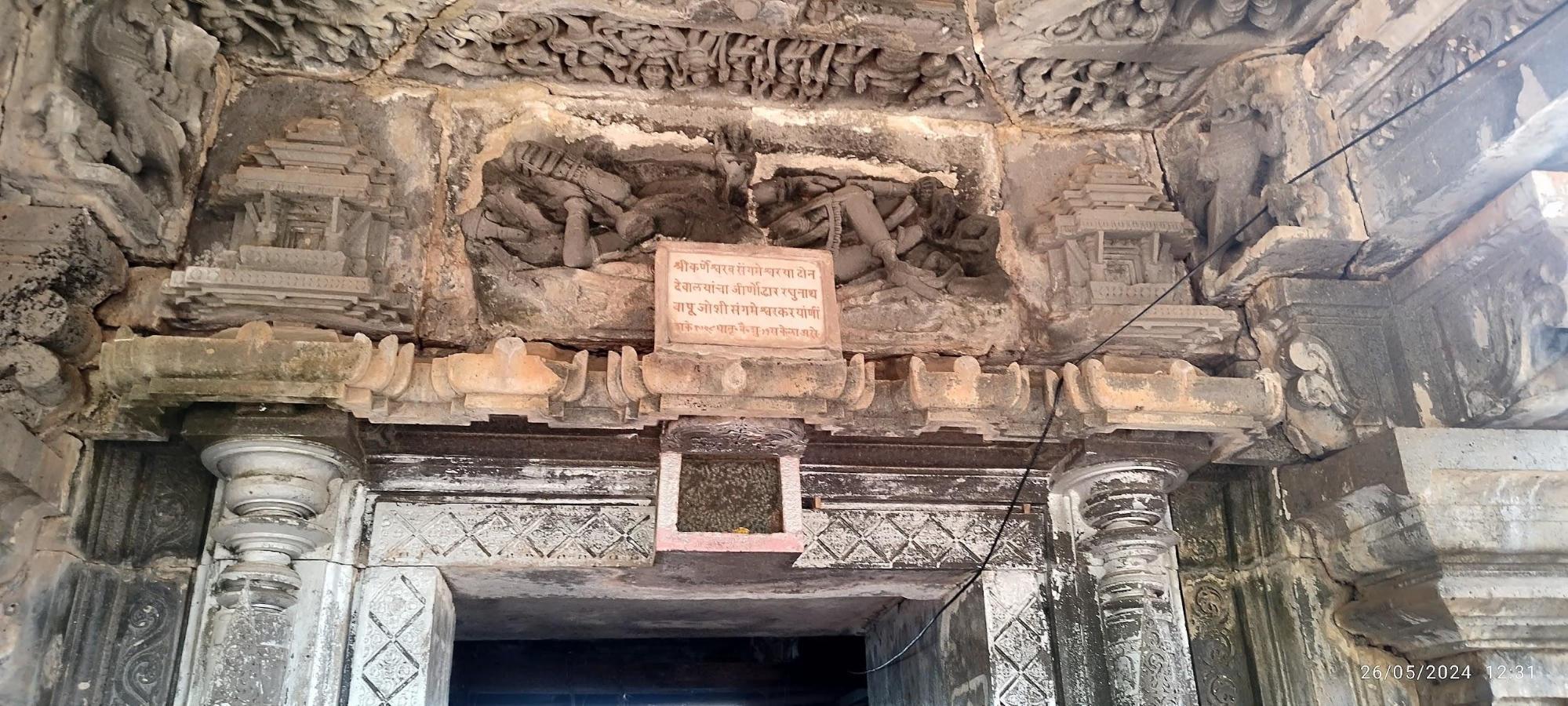

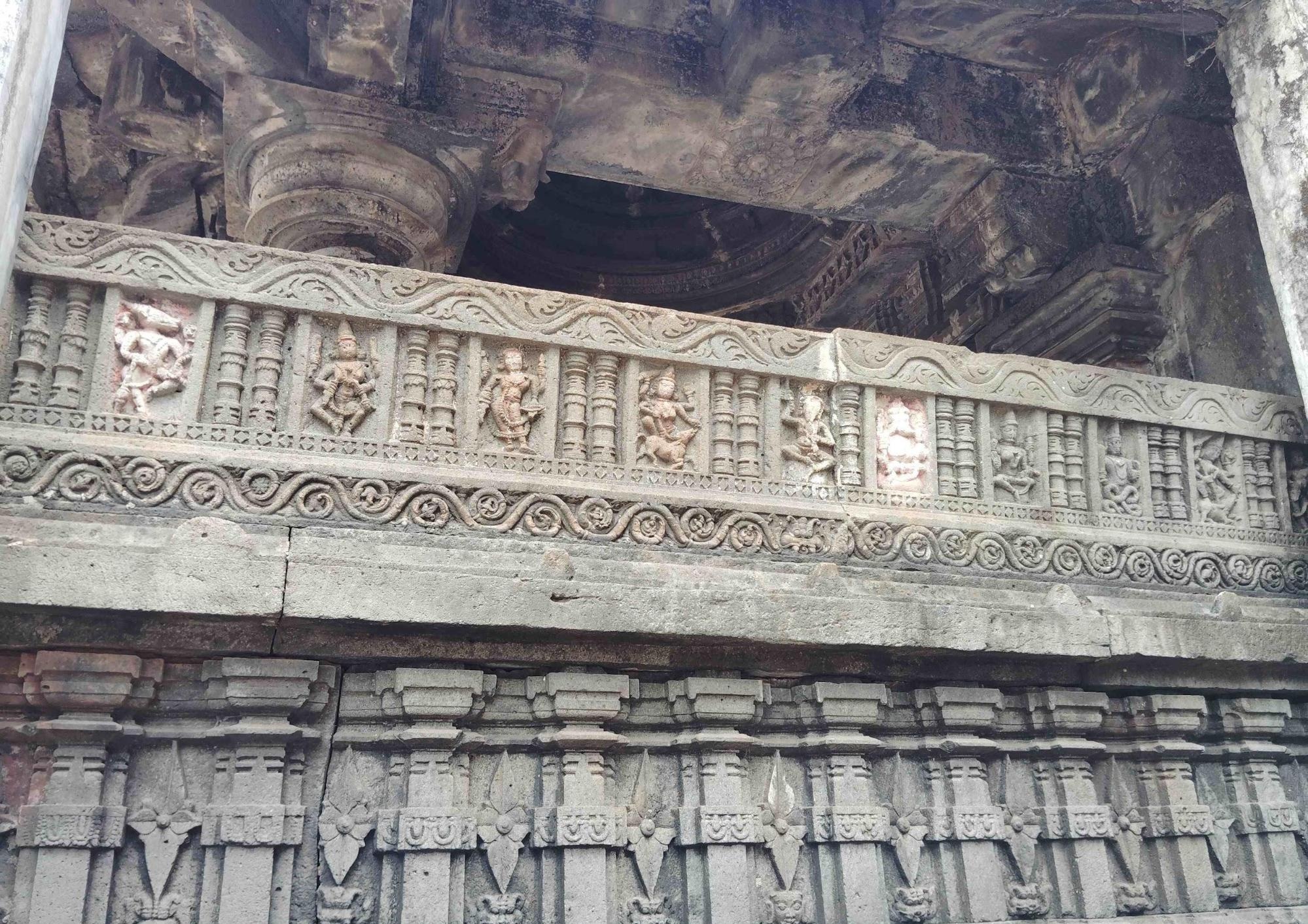
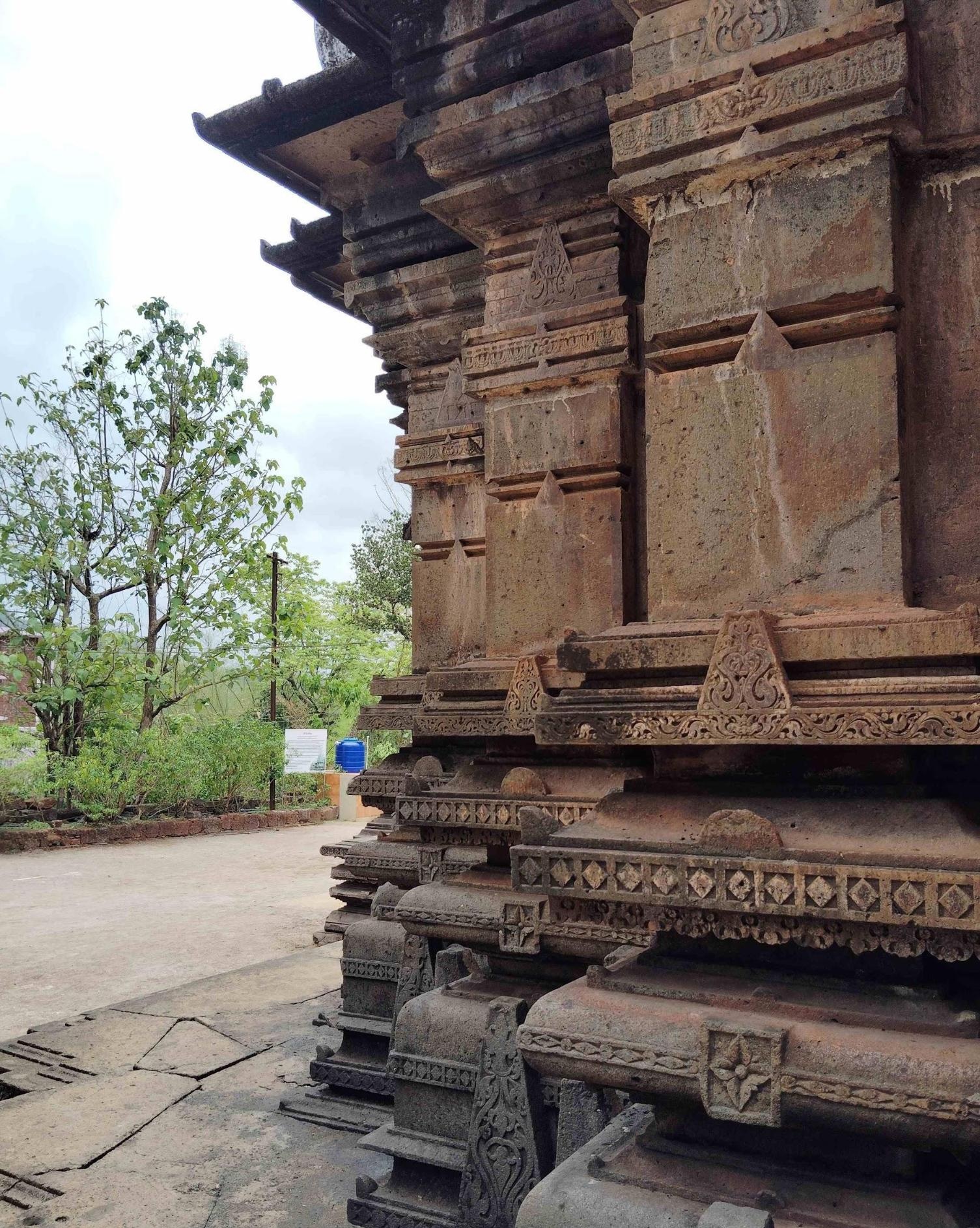
To the right of the eastern entrance is a magarmukh (crocodile-shaped spout) which channels offerings such as milk and water during abhishek (ritual bathing). Fascinatingly, in local belief, the crocodile is considered the vahan (vehicle) of Ganga, and the water that flows from the spout is treated as gangajal (water from the Ganga).
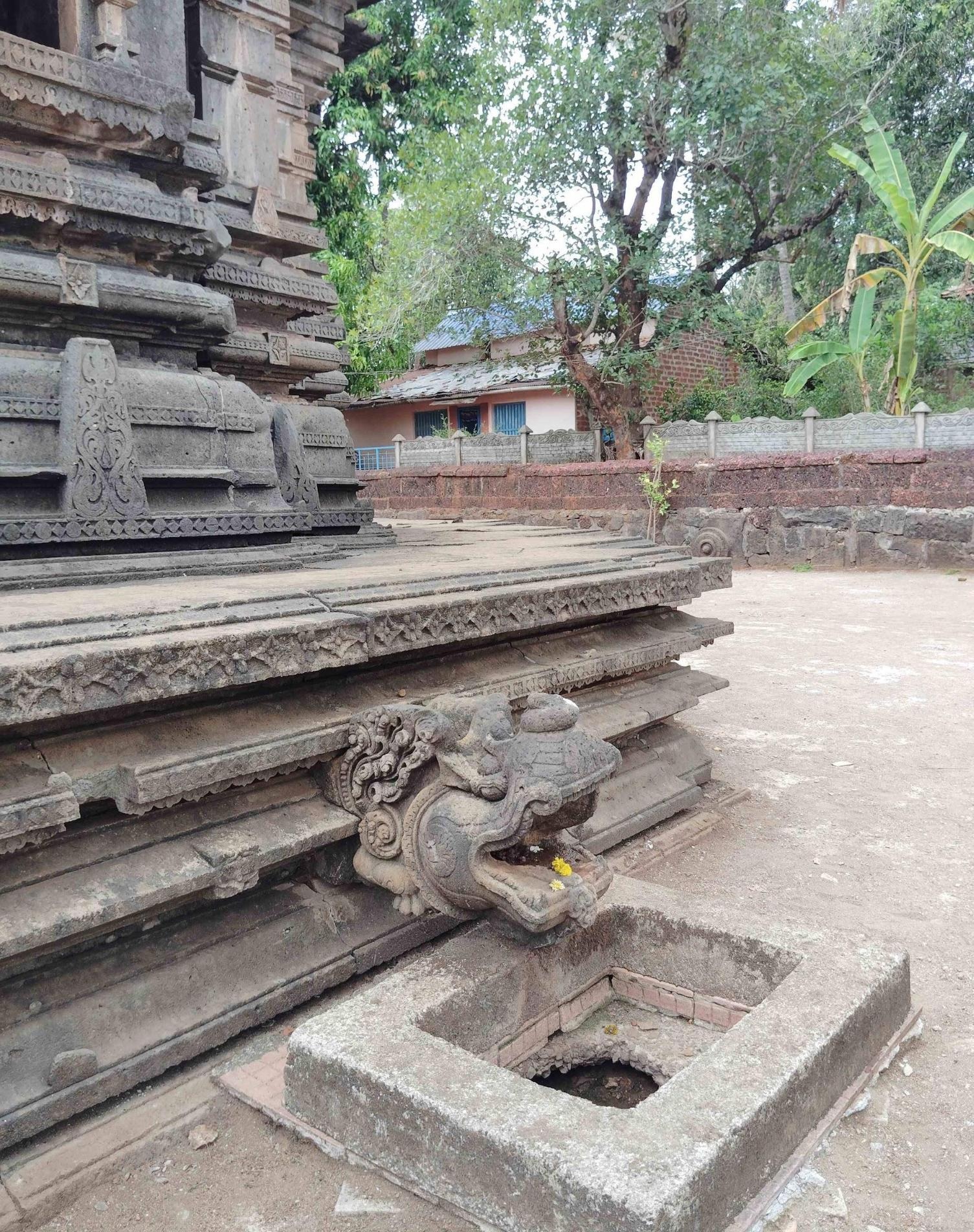
Lokmanya Tilak Memorial Library
The Lokmanya Tilak Memorial Library is located in Chiplun city, Ratnagiri. Established in 1864 as the Native General Library, it was renamed in 1938 in memory of Bal Gangadhar Tilak, who was born in the district.
The library began in a modest room in the Tehsildar’s office and moved to its current location in 1897 with local support. Remarkably, it houses over 66,000 books and includes the Yashwantrao Chavan Sabha Gruha on the upper floor. A prominent half-statue of Tilak stands at the entrance. The library also includes a mural, a dedicated study room, and the Swatantra Veer Savarkar Gyanmandir. A separate section displays historical artifacts and old letters.
Today, the institution continues to serve as a center for public learning and remains closely tied to the legacy of Tilak’s writings, journalism, and educational vision.
Milagris Church
Milagris Church is one of the oldest Christian sites of worship in Ratnagiri, established in 1860. It is regarded to be the central church for the Roman Catholic community in the area and continues to be an active place of worship.

Murlidhar Mandir
Shri Murlidhar Mandir was established in 1780 and is among the oldest surviving mandirs in the region. Though modest in scale, locals say that its structure reflects the characteristic features that many can find in the local Mandir architecture style of the time. Visitors enter through a set of stairs leading into a wooden sabhamandap, supported by carved pillars and covered with a sloping mud-tile roof.
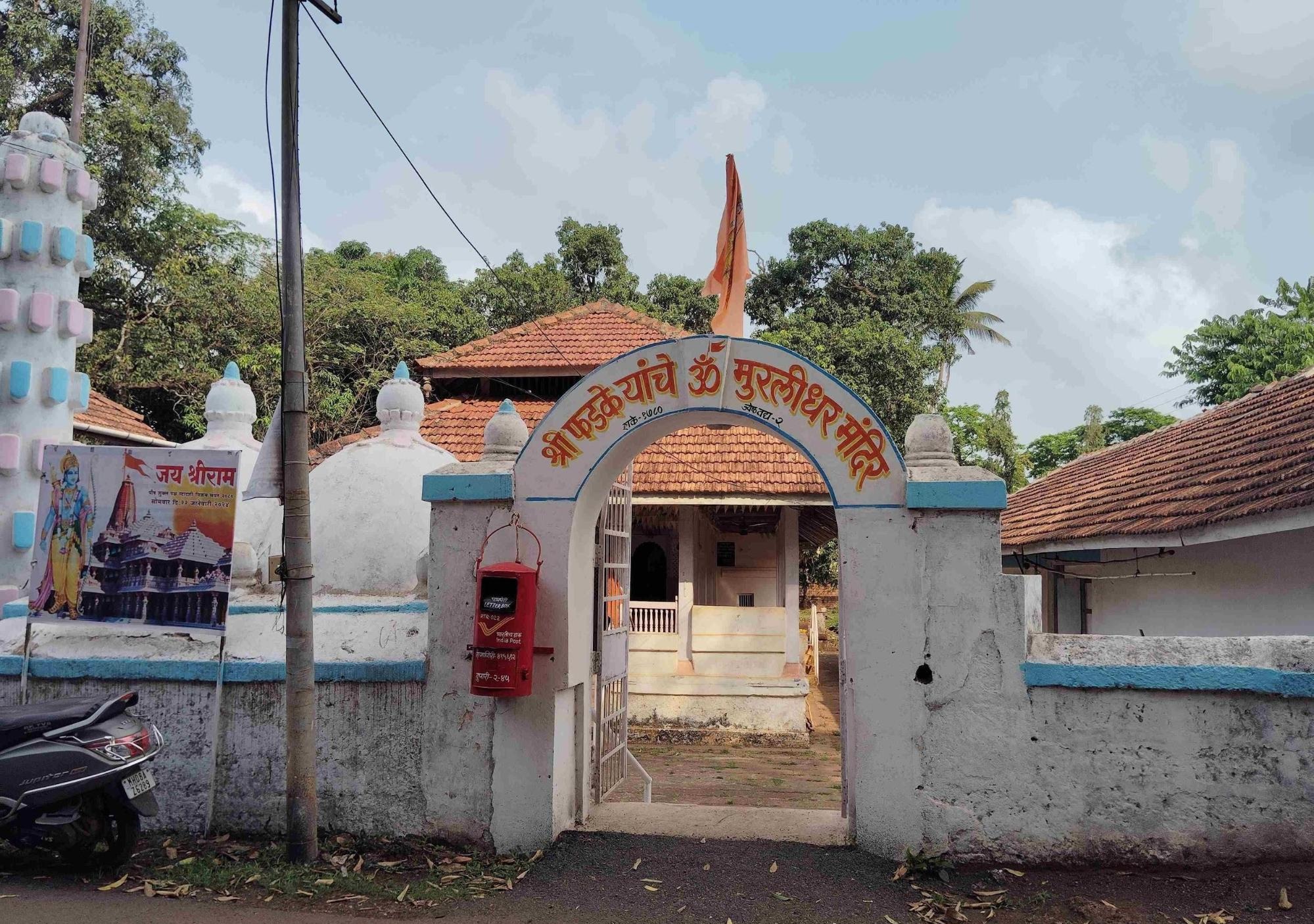
A stone deepmal stands in the courtyard, which is lit during annual festivals. The mandir continues to be used for regular worship, and its unchanged structure, in many ways, offers a quiet record of older materials, forms, and spatial traditions that remain part of daily life.
Naravan Village
Naravan is one of the oldest recorded settlements in the Konkan region and is located in present-day Guhagar town. The village is mentioned in copperplate inscriptions dating back to 743 CE, which document a land grant made to Brahmins by a Chalukya king, at the request of a Rashtrakuta ruler.
The Naravan Plates remain a key historical source, offering insight into early land ownership, mandir patronage, and caste structures in coastal Maharashtra. While the village today is quiet and sparsely populated, it holds deep historical significance.
Panhalakaji Caves
The Panhalakaji Caves are located near the banks of the Kotjai River in Dapoli, Ratnagiri. The complex includes around 29 caves, carved between the 3rd and 13th centuries, and spans Buddhist, Hindu, and Nath sect (Shaiva-linked ascetic lineage associated with yogic practice) traditions.
![Panhalekaji Caves at Dapoli, Ratnagiri is a cave complex set into laterite cliffs which sit along the Kotjai River.[4]](/media/culture/images/maharashtra/ratnagiri/cultural-sites/panhalekaji-caves-at-dapoli-ratnagir_0vf5Swf.png)
The earliest carvings are attributed to the Hinayana and Vajrayana branches of Buddhism. Caves from the Shilahara period (8th–13th century) show a clear shift to Shaivism and Nath iconography. Panels in some caves depict figures like Matsyendranath (yogi-sant), Adinatha (form of Shiv), and Goraknath (Nath teacher), alongside devis such as Maha-Tripurasundari (tantric goddess). The diversity of artwork that are linked to different sects and time periods, in many ways, make Panhalakaji one of the most layered cave sites along the Konkan coast.
Parshuram Mandir
Parshuram Mandir, located near the Mumbai–Goa Highway in Ratnagiri, is dedicated to Parshuram, the sixth form of Vishnu. The site holds deep regional significance, especially in relation to the Konkan coast, which is believed to have been created by Parshuram himself.
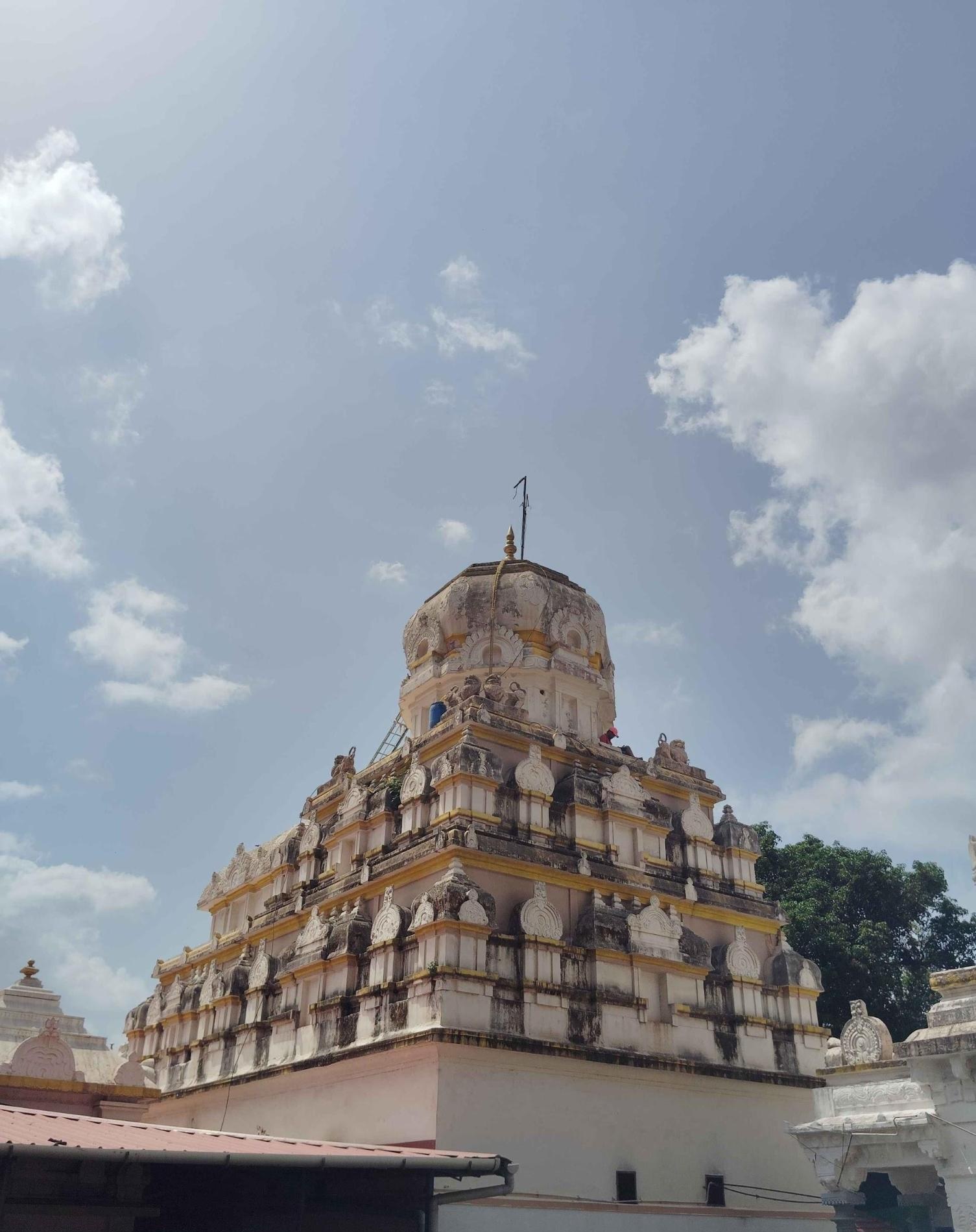
Local tradition considers Parshuram one of the Chiranjivis, or immortals. According to belief, he resides at this site and returns to the garbhagriha each night to rest before leaving at dawn to meditate in the Himalayas. Pujaris have occasionally found the bedsheet in the garbhagriha wrinkled, a detail that continues to circulate among those familiar with the lore.
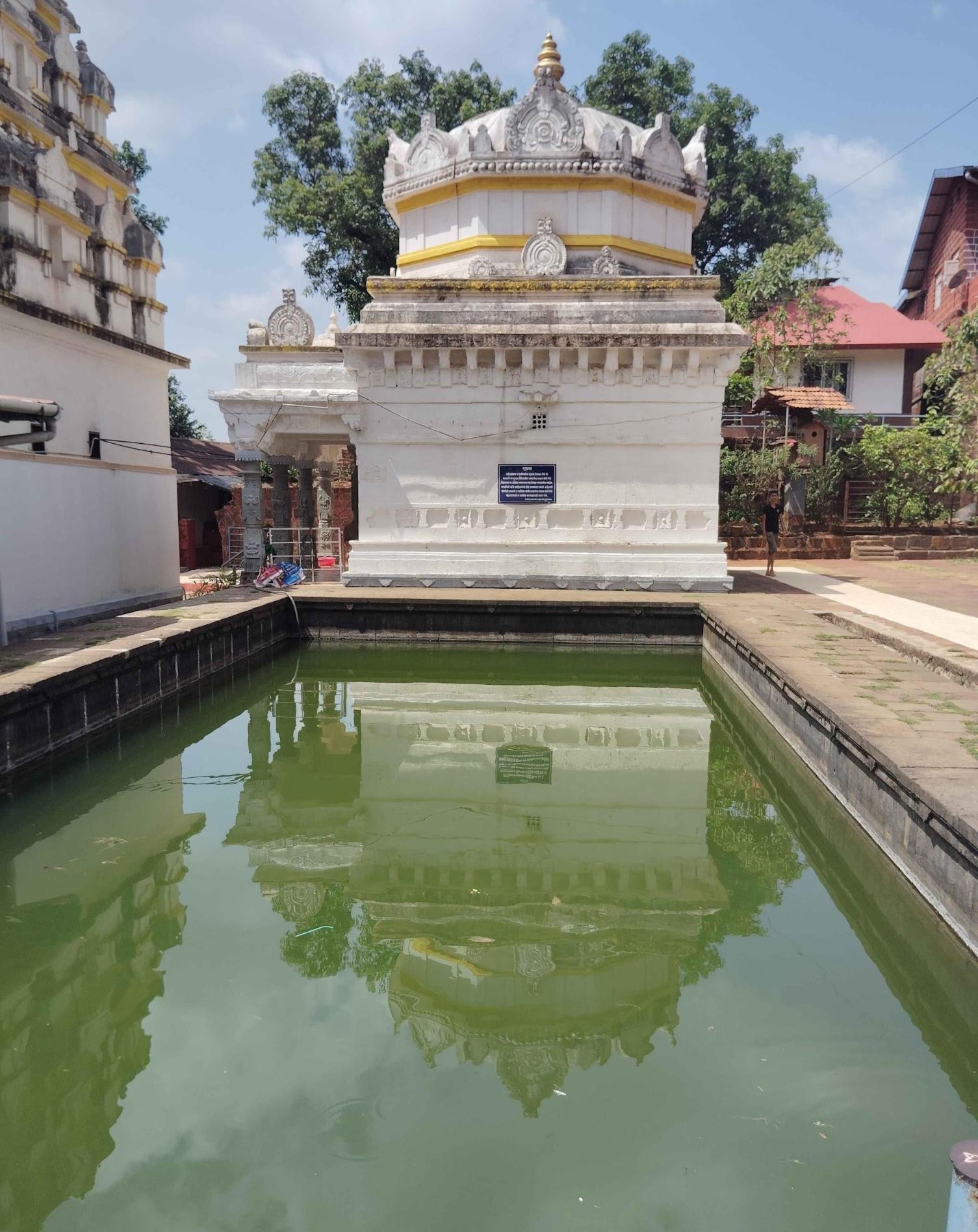
The current structure of the Mandir was established around 1710 by Paramhans Shri Guru Bhramendra Swami. Its construction was made possible through the support of Siddi Yakut Khan (r. 1672–1686), while the land on which it stands was granted by Shahu Maharaj (r. 1707–1749).
According to a board on the site, in 1726, tensions between the Swami and the Siddis led to damage to the structure. The Mandir was later rebuilt, this time drawing on the skills of Portuguese craftsmen active in the region. Interestingly, these overlapping moments of patronage, conflict, and reconstruction have left visible traces in the Mandir’s architecture. Elements drawn from Hindu, Portuguese, and Islamic building traditions sit side by side: from laterite walls to ornamental arches and the structure, in many ways, bears the imprint of multiple hands and histories.

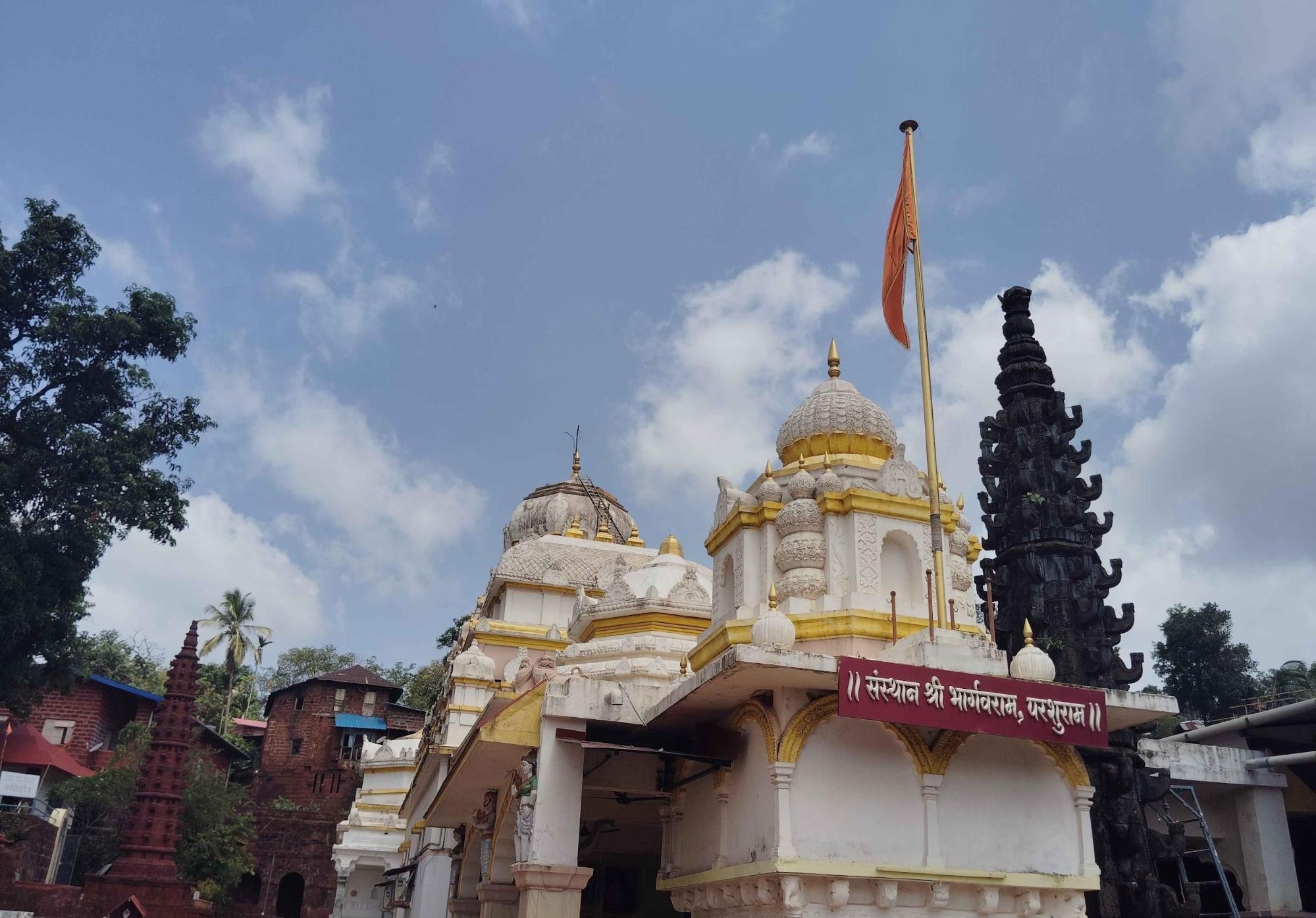
Prior to this reconstruction, an earlier Mandir is believed to have existed at the same location. According to regional accounts, Chhatrapati Shivaji Maharaj performed a mahapuja here in 1669, shortly before his coronation. This association perhaps places the site within the broader historical framework of Maratha religious and political life.
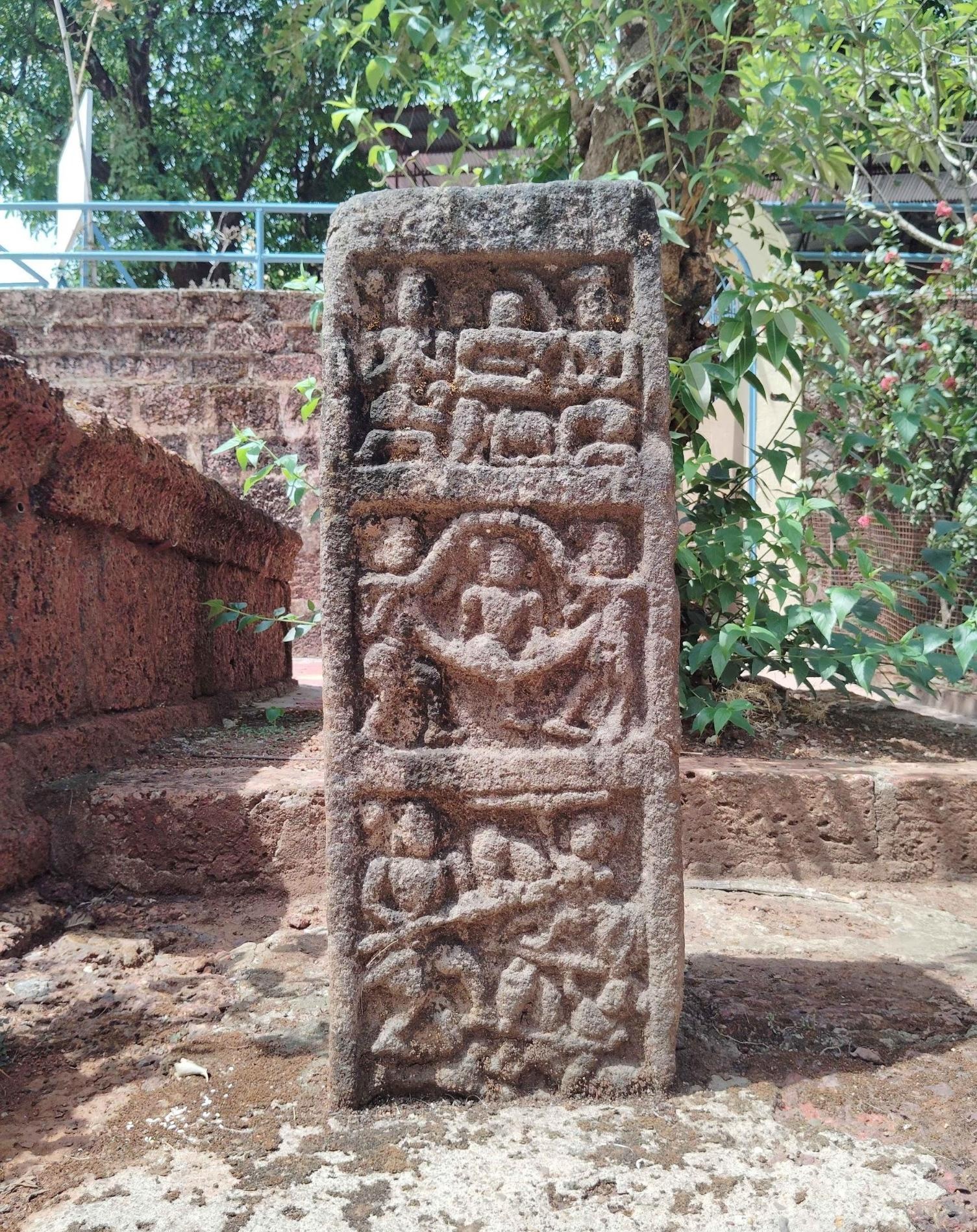
A Veergal, or hero stone, stands within the Mandir complex. Typically dating between the 5th and 13th centuries, these stones were erected to commemorate fallen warriors. Its presence suggests that the site may have had ritual or martial significance long before the present Mandir was constructed.
Patit Pavan Mandir
Patit Pavan Mandir, also known as Lakshmi Narayan Mandir, is located in Ratnagiri and was completed in 1931. The Mandir was established by Bhagojisheth Keer, a follower of Veer Savarkar. It occupies a 20,000 sq. ft. plot acquired by Keer specifically for the project.


The Mandir is closely tied to efforts to break caste barriers and create a space for shared worship and community. Under Savarkar’s guidance, it is said that a large sambhojan in which approximately 1,500 men from different castes dined together was hosted at the site. A similar event was later organized for women. The Mandir remains a space that is associated with social reforms in the region.
Ratnadurg Fort
Ratnadurg Fort is located near Ratnagiri Harbour, on a coastal plateau overlooking the Arabian Sea. Over the centuries, the fort has served multiple rulers and is considered one of the most significant historical sites in the district.
Sachin Joshi (2012) writes that while the origins of the fort are unclear, it is believed to have been constructed by the Bahmani Sultanate (14th–16th century) and later came under the control of the Adilshahi dynasty of Bijapur (16th–17th century). In 1670, it was captured by Chhatrapati Shivaji Maharaj. The fort was later held by the Angres, who commanded the Maratha navy, and eventually passed to the Peshwas.
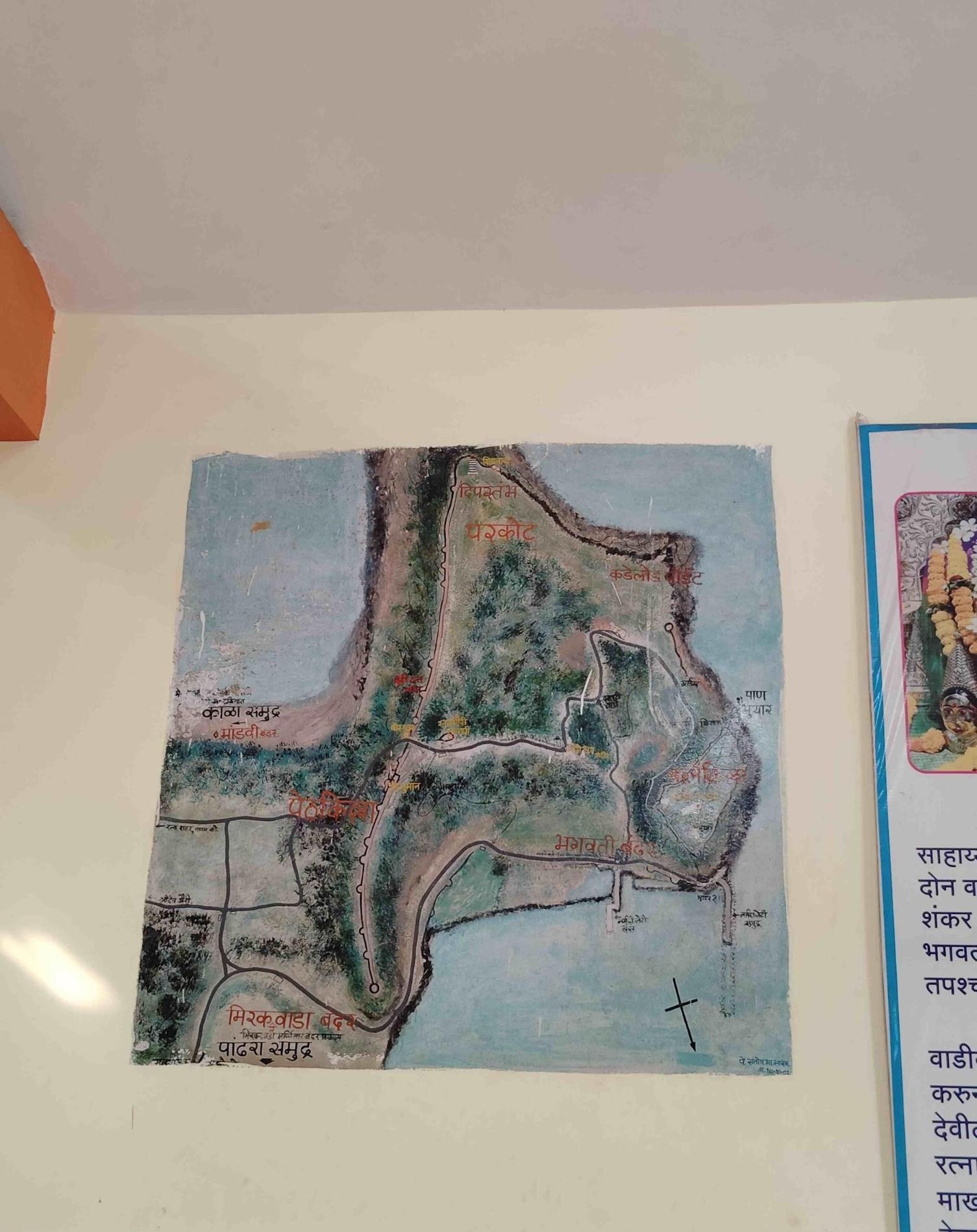
Within the fort complex are several cannons, a lighthouse, and a domed mausoleum dedicated to Ratnagiri Baba (a local saint). Seven watchtowers (burujs) remain in place, offering views of the surrounding coastline. Several underground passageways are also believed to exist within the fort, possibly created for emergency movement.
At the highest point of the fort, approximately 200 ft. above sea level, stands the Bhagwati Mandir. The Mandir is said to be the largest structure within the complex and was renovated by the mandir trust in 1989. A mirror displayed inside the shrine is believed to have been gifted by King Thibaw of Burma during his exile in Ratnagiri.
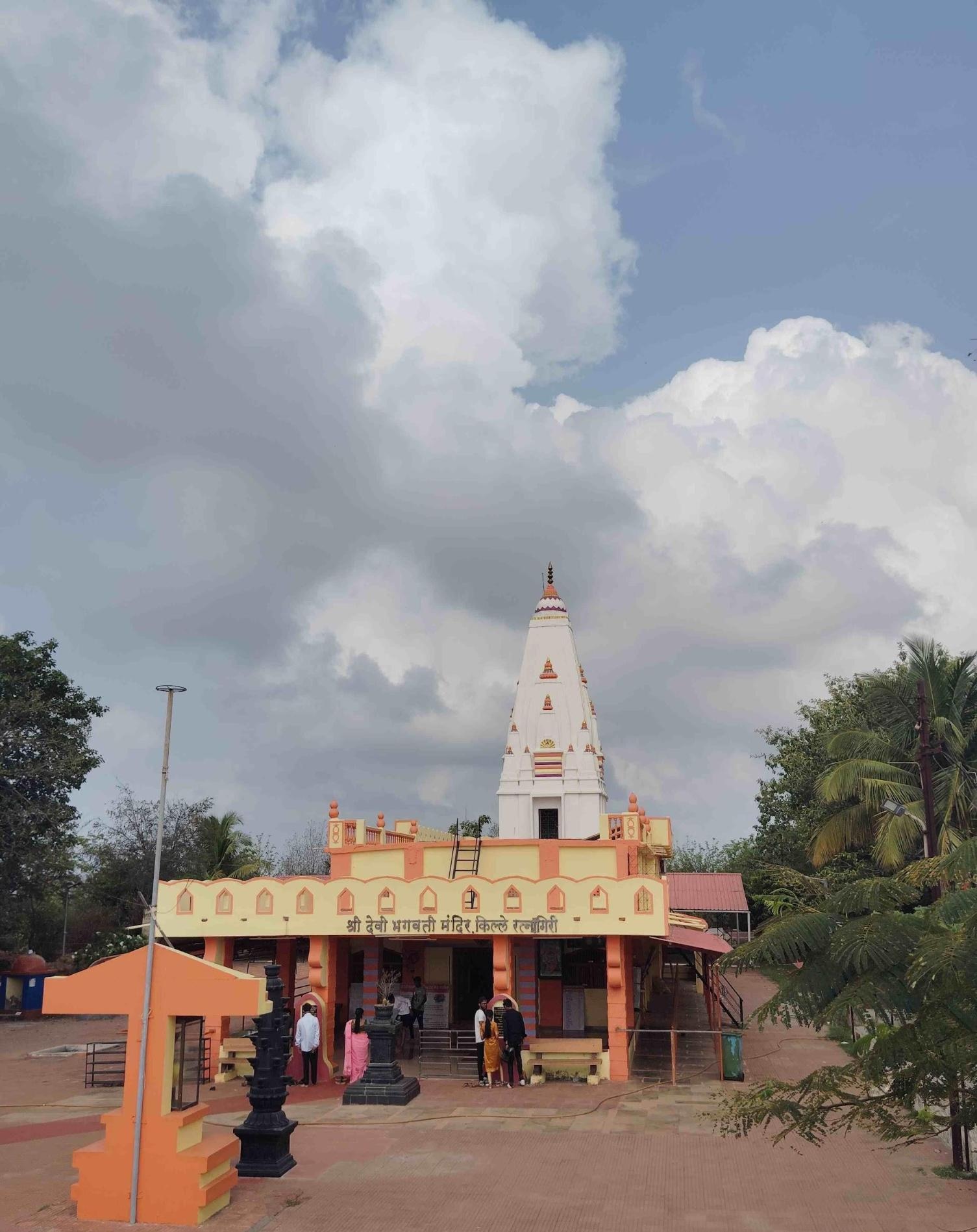

Sane Guruji Smruti Bhavan
Sane Guruji Smruti Bhavan is located in the village of Palgadh, Ratnagiri. It marks the birthplace of Pandurang Sadashiv Sane, better known as Sane Guruji, who was a teacher, writer, freedom fighter, and one of Maharashtra’s most widely respected social reformers.
Guruji is best known for Shyamchi Aai (1936), a semi-autobiographical book that remains a central text in Marathi literature. His writing often focused on cultural values, childhood, and social justice. In total, he wrote over 135 books, many aimed at young readers.
The memorial was built on the site of his family home. It includes photographs, first editions of his books, and personal memorabilia. Though newly constructed, the structure preserves parts of the original foundation. The site serves as a public archive of his life and contributions and is regularly visited by students and researchers.
Shahi Masjid
Shahi Masjid, locally known as the Anda Masjid, is located in the port town of Dabhol in Ratnagiri district. It was built in the 16th century and is known for its egg-shaped dome, which notably, gives the masjid its colloquial name.
![The rounded central dome of the Shahi Masjid, Dabhol, Ratnagiri that interestingly gives the mosque its local name.[5]](/media/culture/images/maharashtra/ratnagiri/cultural-sites/the-rounded-central-dome-of-the-shah_CZUkzBd.png)
The origins of the masjid are linked to an interesting tale. It is said that Princess Ayeshabibi of Bijapur was on her way to Mecca with 20,000 horsemen when bad weather forced her to stop in Dabhol. Unable to continue, she was advised by the Maulana and Kazi to use her wealth for a noble cause. She chose to build a masjid, reportedly spending 15 lakh rupees on its construction. Another tale attributed its construction to a fakir who raised funds by selling eggs, which is also said to be the reason the masjid came to be known as the Anda Masjid.
Shiv Mandirs at Kasba
The Shiv mandirs are a cluster of three historic mandirs which are located behind Sardesai Wada in Kasba, Ratnagiri district. Local tradition attributes their construction to the Pandavas, who are believed to have built them during their exile. Based on architectural similarities, however, the mandirs are thought to date back to the Chalukya period, around the same time as the nearby Karneshwar Mandir.

Fascinatingly, all three mandirs appear to follow the same design language. They follow a shared layout and construction style and at the entrance of each lies a murti of a headless Nandi, perhaps not by design but rather time. Unfortunately, as one can see the structures have not been preserved and are in a dire need of attention. Locals say that two mandirs are currently inaccessible due to bat infestations, while the third has partially collapsed.
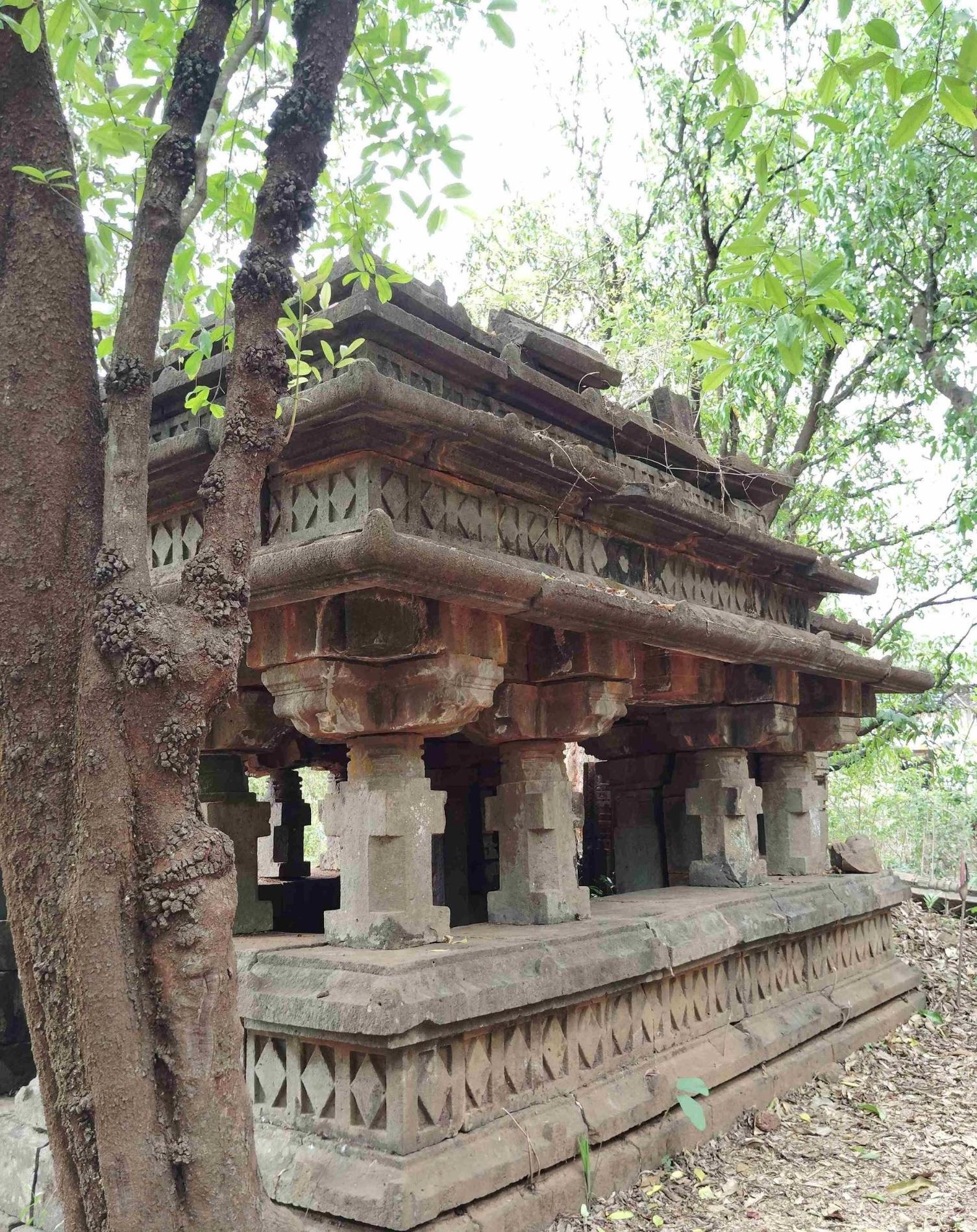

Many remnants of olden sculptures and relics can be found near the site. Notably, a Veergal (martyr’s stone or a memorial stone), typically dated between the 5th and 13th centuries CE, also lies within the sites. Often associated with the Yadava and Shilahara dynasties, veergals were erected in memory of warriors. Their presence here suggests an earlier phase of commemorative use that may have preceded the construction of the mandirs.

Shri Vitthal Vishnu Mandir
The Shri Vitthal Vishnu Ram Panchayatana Mandir in Rajapur’s Sambhaji Peth, Ratnagiri district is located near the Arjuna River. The construction is inspired by the Hemadpanthi architectural style and features stone construction typical of 18th-century mandir design. Notably, a five-line inscription slab was recently rediscovered within its sabhamandap.
The inscription is carved in a mix of Marathi and Sanskrit using Devanagari script. It is etched onto a long, rectangular stone slab divided into two sections by a central floral motif. Though the slab had remained unnoticed beneath a wooden staircase for years, it was rediscovered during cleaning before the 2025 Ram Navami celebrations. Despite its age, the script remains sharp and legible.
![Stone inscription in Devanagari script found inside the sabhamandap of Shri Vitthal Vishnu Ram Panchayatana Mandir.[6]](/media/culture/images/maharashtra/ratnagiri/cultural-sites/stone-inscription-in-devanagari-scri_hjSL8Cb.png)
The inscription records that Ganesh, also called Lakshman, son of Dattatreya Ramachandra of the Datar family and Vasishta gotra, constructed a Mandir dedicated to Suryanagaja Deva: an aspect of the Sun god. It is dated to the seventh day of the bright fortnight of Jyeshtha in Shaka 1707 (corresponding to 1785 in the Gregorian calendar). At that time, Rajapur was under the rule of Chhatrapati Shahu II, with Sawai Madhavrao Peshwa as the chief administrator.
The inscription likely came from a now-ruined Sun Mandir located near the current Vitthal Vishnu Mandir. Its style and script match remnants found at the nearby site, indicating that the slab was moved here for safekeeping. The carving includes symbols and lettering typical of Mandir gateway inscriptions.
This record offers rare insight into Rajapur’s historical landscape, which has received limited scholarly attention despite its importance as a regional administrative and trading center in earlier periods. It reflects the role of the Datar family in community-building, showing how Brahmins of the Vasishta lineage contributed to religious and civic life. The inscription also confirms the existence of a Sun Mandir in 18th-century Rajapur, revealing a deeper layer of the town’s architectural and cultural past.
Someshwar Shiv Mandir
Shri Someshwar Shiv Mandir is located in the forest near Chirani, Ratnagiri. The Mandir is believed to be several generations old and continues to be an active site of local worship. It is home to a Shivling that is generally regarded as swayambhu.
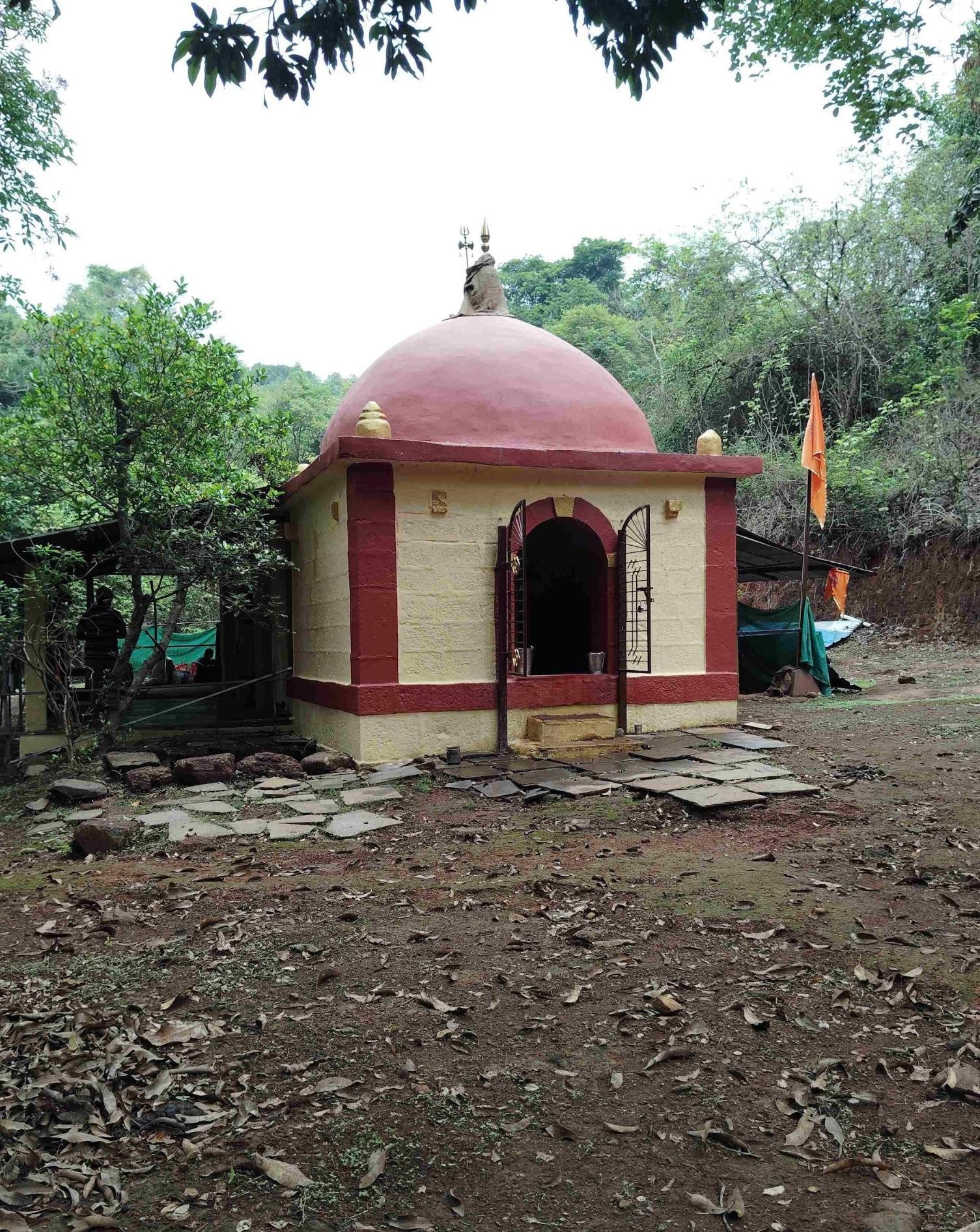

Thibaw Palace
Thibaw Palace is located in Ratnagiri City and is known as the site where the last king of Burma, Thibaw Min, was placed under house arrest by the British colonial government. The palace was constructed in 1910 and served as his official residence until he died in 1916. His Queen Supayalat also lived here during their exile.
![A view of Thiba Palace, constructed in 1910 from red laterite, which served as the residence of the exiled Burmese king Thibaw Min.[7]](/media/culture/images/maharashtra/ratnagiri/cultural-sites/a-view-of-thiba-palace-constructed-i_o6CmEuI.png)
The palace briefly housed the Ratnagiri Sub-Center of Mumbai University and today functions as a museum, displaying personal belongings, furniture, and photographs connected to the Burmese royal family's time in exile. Notably, a Buddha statue brought to India by King Thibaw is installed at the back of the palace, continuing a link between his homeland and his life in Ratnagiri. A short distance from the main structure lies his burial site, marking the final resting place of the last king of the Konbaung dynasty in Burma.
Uddaleshwar/Talkeshwar Mandir
Vyadeshwar Mandir, also referred to locally as Uddaleshwar or Talkeshwar, is located in the town of Guhagar, Ratnagiri district. It is considered one of the most important Shiv mandirs in the Konkan region and continues to serve as a major religious and cultural landmark in Guhagar.
The Vyadeshwar Mahatmya, a 17th-century text composed by Vishwanath Shastri Pitre, traces the site’s origins to the legend of Parashurama: the sage-warrior and a form of Vishnu who is said to have created the Konkan coast by reclaiming land from the sea. According to the text, Parashurama invited Shiv to reside in this newly formed land, and he agreed, establishing his presence here in the form of a linga. The Mandir’s name is believed to come from a Rishi named Vyad, who installed the linga after receiving Parashurama’s blessing.
It is said that the linga had been lost for a long time until, as a local story goes, a red cow named Kapila, kept in the royal stables, was seen anointing a patch of earth with milk. When a stable officer followed her and struck the ground, blood began to flow. A Shivling was later unearthed at the spot. The king of the region, interpreting the event as a sign, ordered the construction of a Mandir on the site. Notably, the current structure is around 150 to 200 years old and dates to the Peshwa period.
Ukshi
Ukshi is a village in Ratnagiri district situated on a laterite plateau. Across exposed rock surfaces in and around the village are carvings of animals, human figures, and geometric designs, cut directly into the stone.
These markings are known as petroglyphs, an ancient art form where designs were made by removing the upper layer of rock to create forms. They are believed to date to the Mesolithic period and are among the earliest archaeological traces recorded in the region.
![Life-size engraving of a male Indian elephant, with clearly defined features, attributed to the Mesolithic period. Ukshi, Ratnagiri district.[8]](/media/culture/images/maharashtra/ratnagiri/cultural-sites/life-size-engraving-of-a-male-indian_Bn3pDab.png)
Similar sites have been identified in villages such as Barsu and Devihasol, mostly concentrated in the southern Konkan. The carvings were largely undocumented until recent surveys and are now part of a proposal for UNESCO World Heritage recognition. Remarkably, it is said that the discovery marks the first prehistoric evidence recorded in this part of Maharashtra, offering a rare glimpse into the early human presence in the Konkan region.
Valukeshwar Mandir
Valukeshwar Mandir is located in Naravan village, Guhagar in Ratnagiri district. It is one of the few mandirs in the region with a large Shaligram-style shivpindi, measuring over three metres in length. The Mandir remains active and is regularly visited by locals for daily rituals and festival celebrations. Interestingly, it is noted that the Mandir is mentioned in the Sahyadri Khand of the Skanda Purana, where it is described as a border devasthan near the ancient limits of Guhagar.

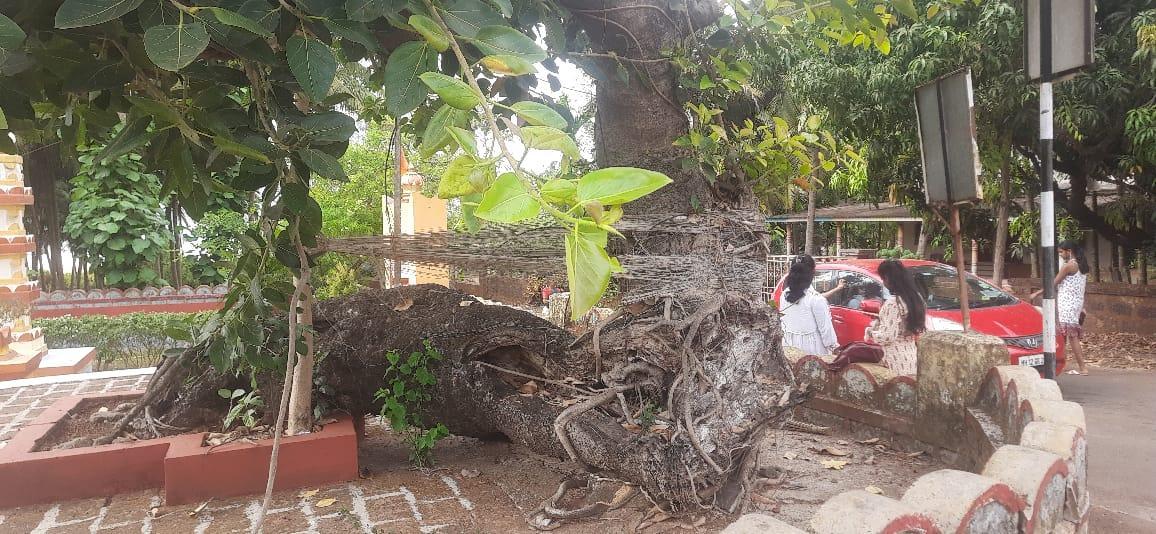
The structure includes a sabhamandap and garbhagriha, enclosed within a stone wall. Several deepmals line the courtyard, used for lighting oil lamps during major observances. Notably, one of these bears a tile inscribed with the birth and death dates of Lokmanya Tilak, linking the site to early 20th-century history.
Velneshwar Mandir
Velneshwar Mandir is located in the coastal village of Velneshwar, Ratnagiri. Dedicated to Bhagwan Shiv, it remains an active site of worship for the local community. The Mandir is also associated with the belief that prayers offered here are fulfilled without delay. Interestingly, the Mandir derives its name from the word ‘Vel’ meaning time in Marathi, which reflects this local sentiment.

According to residents, the earliest devasthan on this site dates back to the 12th century and was known as Veloba. The current structure was built approximately 400 years ago by a local named Gadgil and continues to be maintained by the community. Notably, the Mandir’s proportions and layout reflect the architectural continuity seen across Konkan’s coastal mandirs.
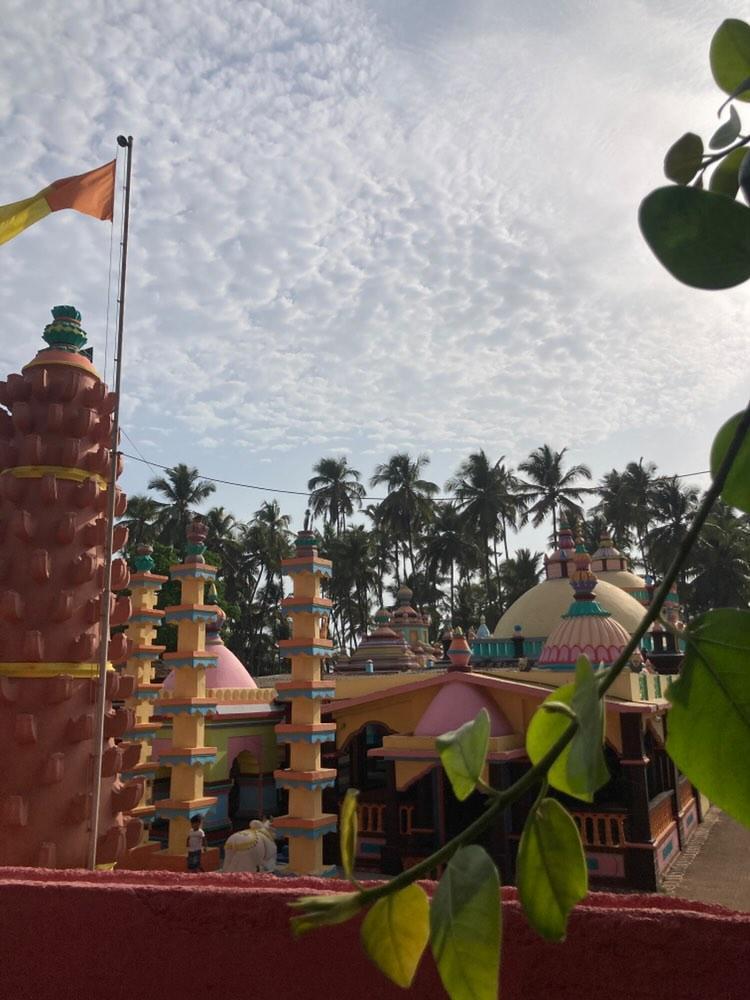
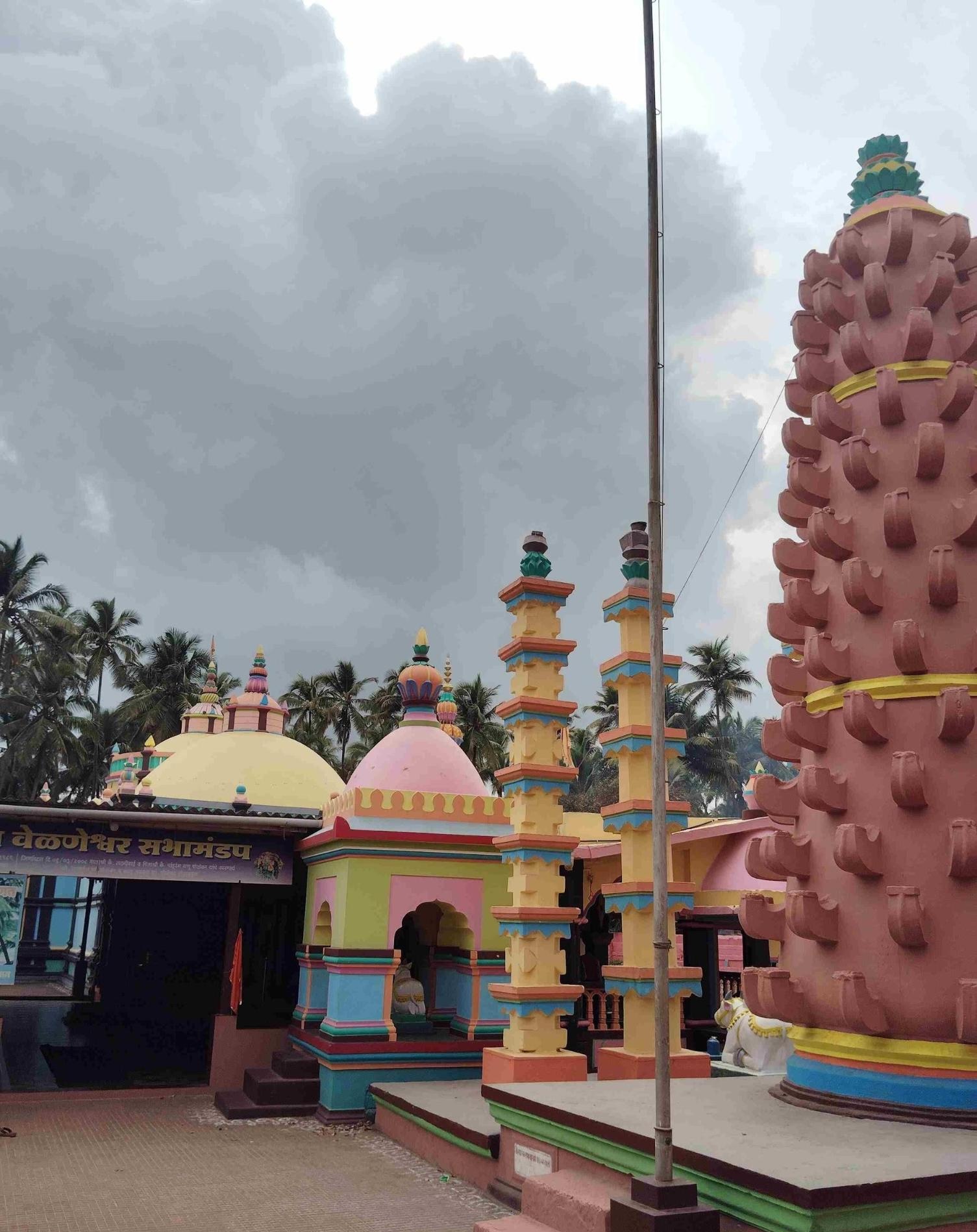
World War I Memorial
The World War I Memorial is located in the village of Shivtar, Ratnagiri. It commemorates 18 men from the village who served and died during the First World War. A white tile embedded at the base of the memorial reads: “From this village, 234 men went to the Great War of 1914–1919; of these, 18 gave up their lives.” The phrase “Great War” reflects the terminology used at the time, likely inscribed shortly after the conflict ended.

The memorial is a modern concrete obelisk, accompanied by flagpoles and a sculpture of an inverted rifle and helmet. The base features the initials GRI (Georgius Rex Imperator) a reference to King George V, under whose reign the war was fought, reflecting the colonial context in which these men served.
The current memorial was built decades later through local efforts, preserving the original tile and formally honouring those from the village who never returned. It perhaps remains one of the few known sites in the region that directly links the district to the global events of the early twentieth century.
Yakub Baba Dargah
Yakub Baba Dargah is located in the village of Kelshi, Ratnagiri. The dargah is associated with the arrival of Yakub Baba, said to have journeyed from Sindh to Konkan during Shivaji Maharaj’s expedition to Dabhol. According to local accounts, Shivaji initiated the dargah’s construction, which was later completed by his son Sambhaji.
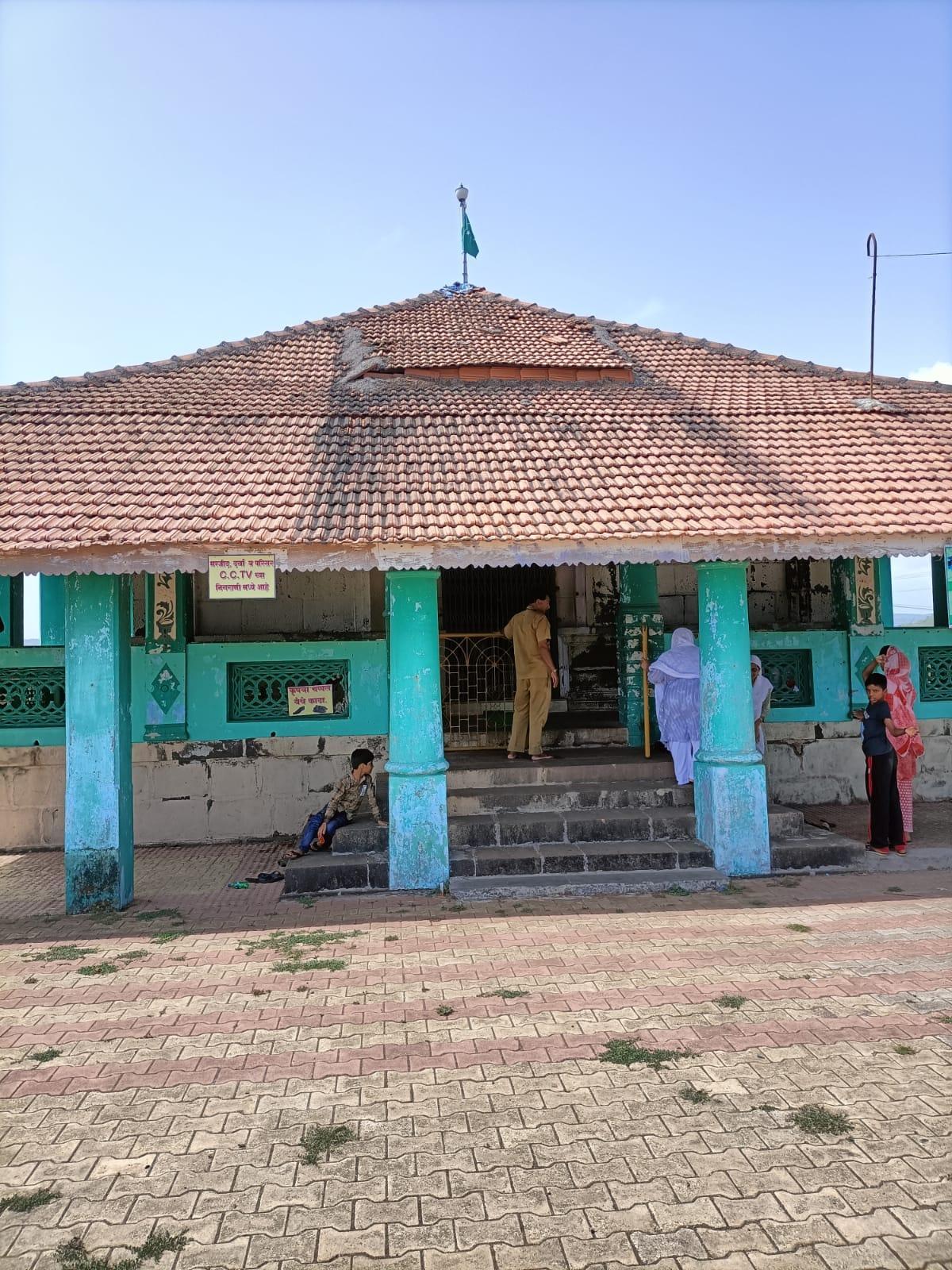
The site is visited by bhakts each year on December 6 for the annual Urus. The dargah of Himmat Khan, a companion of Yakub Baba, is located adjacent to the main shrine. During the Urus, a ceremonial chadar is first placed on Himmat Khan’s dargah before the main rituals begin.
Notably, a Farsi inscription remains affixed to the entrance of the Dargah, with its meaning still undeciphered till this day.
Zari Vinayak Mandir
Shri Zari Vinayak Mandir is located near Bhatye Beach in Ratnagiri district and is built around a revered swayambhu Ganesh murti. A freshwater kund lies adjacent to the Mandir. Though recently constructed, the Mandir includes a designated space for yagnas (ritual offerings made into fire) as part of Vedic practice.


Sources
Archaeological Survey of India. Edited by Debala Mitra.1984. INDIAN ARCHAEOLOGY 1981-82 — A REVIEW. Archaeological Survey of India.
Ashutosh Bapat. 2023. शिल्पकथा कर्णेश्वराची Shilpakatha Karneshwarachi. Snehal Prakashan
Dargah Info. Hazrat Yakub baba Sarvari Rahamtulla Dargah. Dargah Info.http://dargahinfo.com/Dargah_History.aspx?HI…
Ganpatipule. Ganpatipule Temple. Ganpatipule.http://ganpatipule.co.in/
Maharashtra State Gazetteers. 1880 (reprinted in 1996). Ratnagiri and Sawantwadi District. Directorate of Government Printing, Stationary & Publications, Government of Maharashtra, Mumbai.
Parag Pimpale. 2004. Sad Sagarachi: Guhagar-Velneshwar-Hedavi. Bookmark Publication.
Pawar, Vinod. 2025. “राजापूर येथील विठ्ठल विष्णूराम पंचायतन मंदिर शिलालेख.” विनोदस्तंभ.https://vinodstamb.wordpress.com/2025/04/07/…
Sachin Vidyadhar Joshi. 2012. रत्नागिरी जिल्ह्याची दुर्गजिज्ञासा. Bookmark Publication.
Sakal.2024. History of Yakub Baba Dargah, Utambar Village. eSakal.https://www.esakal.com/kokan/yakub-baba-darg…
Taluka Dapoli. 2019. Shahi Masjid – Dabhol. Taluka Dapoli.https://talukadapoli.com/places/shahi-masjid…
Umesh Parida. 2024. 10,000-Year-Old Rock Art Carvings Discovered in Ratnagiri Villages. Times of India.https://timesofindia.indiatimes.com/city/nav…
Last updated on 22 July 2025. Help us improve the information on this page by clicking on suggest edits or writing to us.